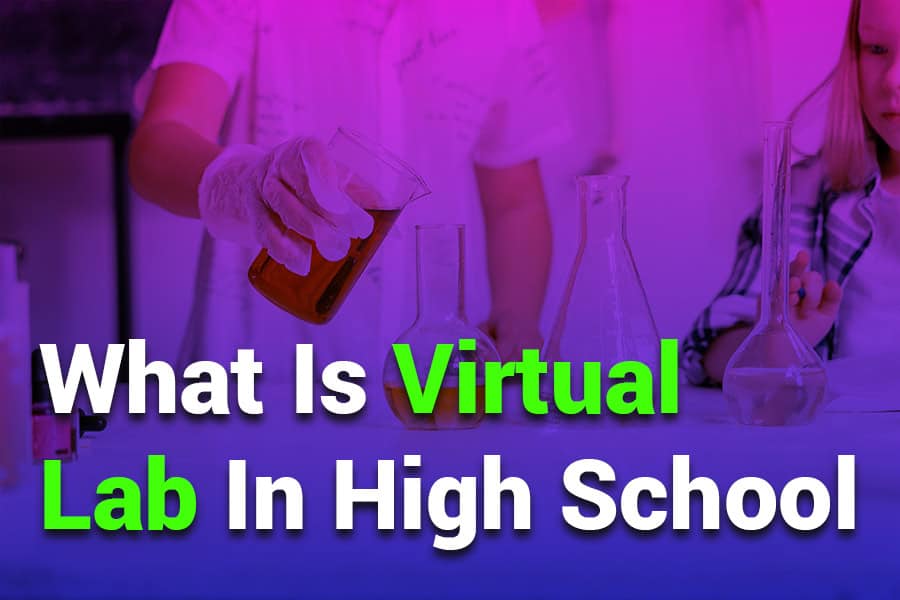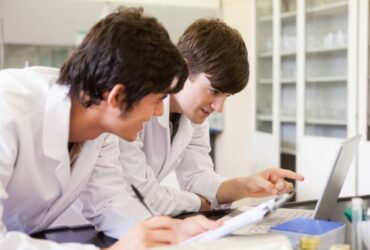As technology continues to transform education, virtual labs have emerged as a powerful tool for high school science classes. But [What is Virtual Lab in High School]? A virtual lab is an online platform that simulates traditional lab environments, enabling students to conduct experiments and explore scientific concepts from any location. These digital labs offer interactive simulations, which make science more accessible and engaging for students. Through a virtual lab, students can safely learn complex topics, repeat experiments, and visualize scientific phenomena that may be difficult to observe in a physical lab setting.
Virtual labs are beneficial for schools with limited lab resources, allowing them to provide students with a complete science education without the need for physical equipment. They are also popular in online and hybrid learning environments, offering flexibility while maintaining educational standards. This article explores how virtual labs work in high school, what benefits they offer, and why they are becoming an essential part of modern science education.
What is Virtual Lab in High School?
A virtual lab in high school is a digital simulation of a traditional science lab where students can conduct experiments and learn through interactive activities. Unlike a physical lab, a virtual lab operates through an online platform, often accessed on a computer or tablet. It’s designed to replicate the hands-on experience of real-world labs but in a controlled and safe digital environment. Virtual labs allow students to interact with virtual equipment, manipulate variables, and observe the results of their experiments in real-time.
In high school, virtual labs cover subjects like biology, chemistry, and physics. For example, a biology virtual lab may allow students to examine cell structures using a digital microscope, while a chemistry lab might simulate reactions between different chemicals. These labs offer flexibility, enabling students to repeat experiments and explore different outcomes without constraints. With virtual labs, high schools can provide a complete science curriculum regardless of physical resources, making quality science education accessible to more students.
The adoption of virtual labs is particularly beneficial for schools with budget constraints or limited access to lab materials. Additionally, virtual labs support online and hybrid learning environments, offering an effective solution to continue science education remotely.
How Do Virtual Labs Work in High School? Exploring the Mechanics
Virtual labs utilize online tools and technologies to simulate the experience of a physical science lab. Here’s a look at the typical components of a high school virtual lab:
Interactive Simulations
Simulations mimic the behavior of real-world scientific phenomena. For example, a chemistry virtual lab might simulate reactions, allowing students to observe and understand chemical changes.
Digital Equipment and Tools
Virtual labs provide students with digital versions of lab equipment, like beakers, microscopes, and Bunsen burners. Students can interact with these tools to conduct experiments as they would in a physical lab.
Variable Control
Students can adjust variables, such as temperature or concentration, and observe how these changes impact the experiment’s outcome. This feature is particularly helpful for understanding cause-and-effect relationships in scientific studies.
Real-Time Feedback
Virtual labs often include feedback mechanisms, giving students immediate insights into their actions. This feature helps students learn by correcting mistakes in real-time, enhancing understanding and retention.
Data Collection and Analysis
Students can record results, analyze data, and generate reports, just as they would in a traditional lab. Many virtual labs even include tools for graphing and data visualization.
Benefits of Virtual Labs for High School Students and Educators
Virtual labs bring numerous benefits to high school science education, making learning more flexible, accessible, and engaging. Here’s a look at some key benefits:
- Increased Accessibility
Virtual labs make science education accessible to students in remote or underserved areas, offering high-quality learning experiences regardless of location. - Safety in Experimentation
Students can perform complex experiments without the risks associated with handling chemicals or hazardous materials, making science safer. - Cost-Effective for Schools
Virtual labs reduce the need for costly lab equipment and materials, making them an affordable option for schools with limited budgets. - Repeatable and Scalable
Students can repeat experiments multiple times to better understand concepts and virtual labs can accommodate larger numbers of students than physical labs. - Support for Diverse Learning Styles
Virtual labs cater to visual and hands-on learners, providing interactive and engaging content that enhances comprehension.
Types of Virtual Labs Used in High Schools
Virtual labs can vary in complexity and are often tailored to specific scientific disciplines. Here are some popular types of virtual labs used in high school education:
- Biology Virtual Labs
These labs might include simulations for cell biology, genetics, and ecology. Students can examine cell structures, analyze genetic patterns, or observe ecosystems without leaving their desks. - Chemistry Virtual Labs
Chemistry labs often simulate chemical reactions, allowing students to mix virtual chemicals, observe outcomes, and learn about reaction mechanisms without physical risk. - Physics Virtual Labs
Physics labs help students explore concepts like motion, electricity, and optics. Students can manipulate variables like force and velocity to understand fundamental physics principles. - Environmental Science Virtual Labs
Environmental labs allow students to explore ecological systems and analyze environmental data, such as pollution levels and biodiversity, through digital simulations. - Anatomy and Physiology Virtual Labs
In anatomy labs, students can dissect virtual models of organs and systems, gaining insight into the human body without the need for real specimens.
Who Benefits Most from Virtual Labs? Ideal Candidates for Online Labs
Virtual labs are valuable for various types of learners and educational settings. Here’s a breakdown of who can benefit most:
Schools with Limited Resources
Schools that lack physical lab equipment or funding for lab materials find virtual labs a cost-effective solution for science education.
Remote or Online Students
Students enrolled in online schools benefit from virtual labs, which allow them to participate in lab activities without a physical location.
Students Who Prefer Self-Paced Learning
Virtual labs often support self-paced learning, enabling students to progress at their speed, which is ideal for those who need extra time to grasp complex concepts.
Educators Seeking Engaging Tools
Teachers looking to engage students with interactive and hands-on activities can incorporate virtual labs to enhance traditional teaching methods.
Advanced Science Students
For students interested in pursuing science careers, virtual labs offer advanced simulations and resources that can deepen their understanding of complex subjects.
Final Thoughts
Understanding [What is Virtual Lab in High School] reveals how technology is reshaping science education. Virtual labs provide a safe, accessible, and engaging platform for students to explore scientific concepts and conduct experiments without the need for physical equipment. By replicating the experience of traditional labs in a digital environment, virtual labs open up new possibilities for interactive learning in high school science.
Whether used to supplement in-class activities or support remote learning, virtual labs offer valuable benefits, from cost-effectiveness to repeatable experiments. As technology advances, virtual labs will likely play an increasingly prominent role in education, ensuring that all students have the resources they need to succeed in science.
Frequently Asked Questions
Q. What is a virtual lab in high school science?
A. A virtual lab is an online platform where students conduct science experiments through simulations, providing an interactive learning experience without physical lab equipment.
Q. How do virtual labs work in high school?
A. Virtual labs replicate traditional lab experiments using interactive simulations, digital tools, and variable controls, enabling students to learn science concepts online.
Q. Are virtual labs as effective as traditional labs?
A. Virtual labs offer many of the same educational benefits as traditional labs, allowing students to perform experiments, understand scientific concepts, and collect data in a digital format.
Q. What subjects are covered in high school virtual labs?
A. Virtual labs cover a range of subjects, including biology, chemistry, physics, environmental science, and anatomy, with simulations tailored to each discipline.
Q. Do students need special equipment for virtual labs?
A. Typically, a computer or tablet with internet access is sufficient. Some virtual labs may require additional software, but most are designed to be accessible on standard devices.












































Leave a Reply